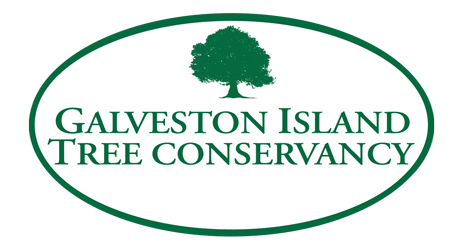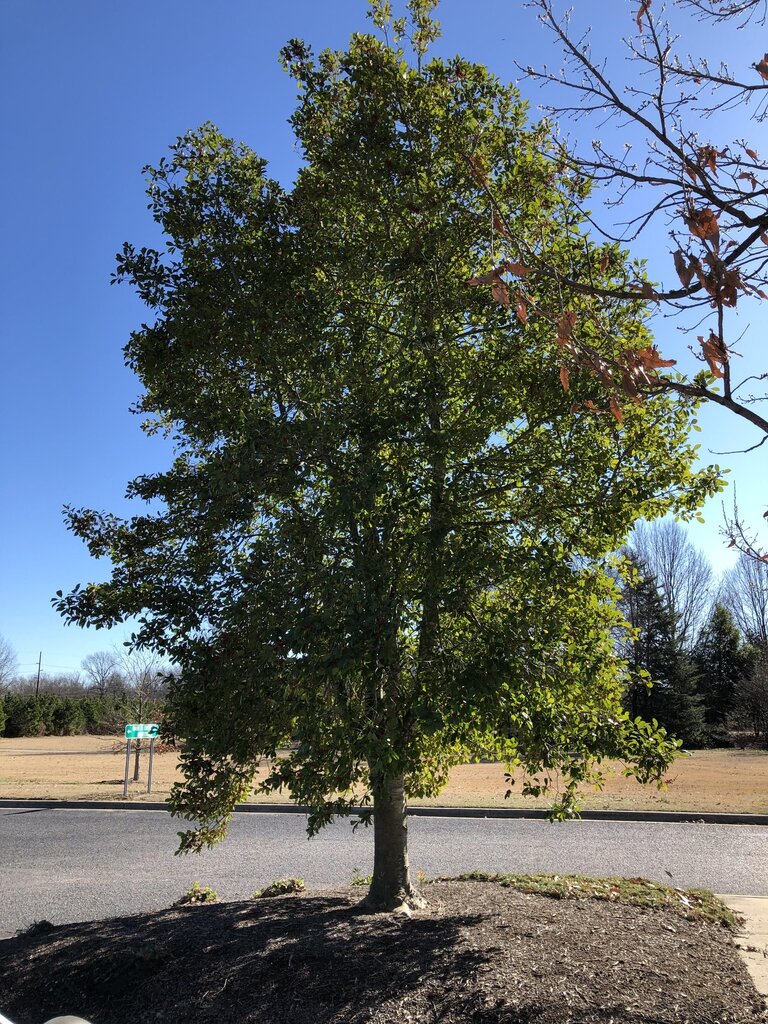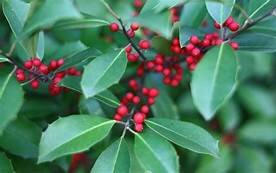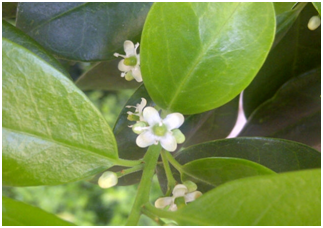Savannah Holly
Tree Stories: Savannah Holly Brings Holiday Color
‘Tis the season to ''deck the halls with boughs of holly.'' Evergreen holly trees with seasonal red berries have been a traditional winter favorite for centuries. Civilizations as diverse as Rome and the Druids, through modern times, have used the red and green of holly for color during the dark days of December.
The Romans sent holly as goodwill tokens during their feast of Saturnalia. Druids believed it to be a refuge for woodland spirits. Holly is a staple of Christmas cards, carols, and decorations. This refers to a crown of thorns, and Christ’s blood at crucifixion, which in legend turned holly’s white berries to red.
Approximately 480 species of holly worldwide are in tropical to temperate zones. Recently I discovered a new-to-me holly right here in my own neighborhood, when a neighbor showed me a tree he had just planted in a narrow and partly shaded space: Savannah Holly (Ilex x attenuata ‘Savannah’).
I then realized that a striking group of trees I’ve admired for several years is comprised of Savannah hollies. Galveston College has a beautiful row of them in the inner courtyard. They are now loaded with shiny red berries that are striking with the deep green leaves.
This North American native holly is a beautifully shaped tree that develops a narrow pyramidal or columnar shape. The moderate growth rate allows them to reach 35 feet in eight years in the right conditions, with a spread of 6-10 feet. Inconspicuous white flowers appear in spring followed later by heavy clusters of red berries that persist through fall and winter on female plants.
Savannah holly can thrive in a variety of conditions and has potential for the home landscape. Sun increases berry production, but part shade is tolerable. A variety of well-drained soils will work with a slightly acid soil preferred. The tree has high drought tolerance and moderate salt tolerance. Gardeners will enjoy the lack of thorns, tree litter, or problematic surface roots, plus minimal pruning needs. Pests and diseases are not major problems.
The tall and narrow shape is ideal for home landscapes with limited space. Savannah can be used as hedges, in tree lawns, and street trees. In public spaces its limited footprint can be suitable for parking lot islands, road median strips, and sidewalk cutouts.
Bright berries make an excellent food source for birds and other wildlife. Many nurserymen propagate from female trees so most nursery trees have berries. (A word of caution: leave the berries for wildlife because they can cause digestive problems, especially for children.) People have found use for holly berries and wood as well. Native Americans used preserved berries as decorative buttons and for barter. The wood can be used for making canes, scroll work and furniture, and has been substituted for ebony in inlay work when stained black.
If you need a tree for a small space Savannah holly may be a perfect gift for your home landscape. We can all benefit from more trees. So plant on, and Season’s Greetings, everyone!
Hurricane Ike caused the loss of 40,000 trees on Galveston Island. The Galveston Island Tree Conservancy was formed to address that loss and to date has replaced over 19,000 through grant-funded plantings and giveaways, with more planned. “Tree Stories” is an ongoing series of articles intended to bring attention to outstanding Island trees and tree care. If you have or know of a special tree on Galveston Island that should be highlighted, please email treesforgalveston@gmail.com.
Margaret Canavan is a Galveston resident, a Certified Master Gardener, and a member of the Board of the Galveston Island Tree Conservancy.




